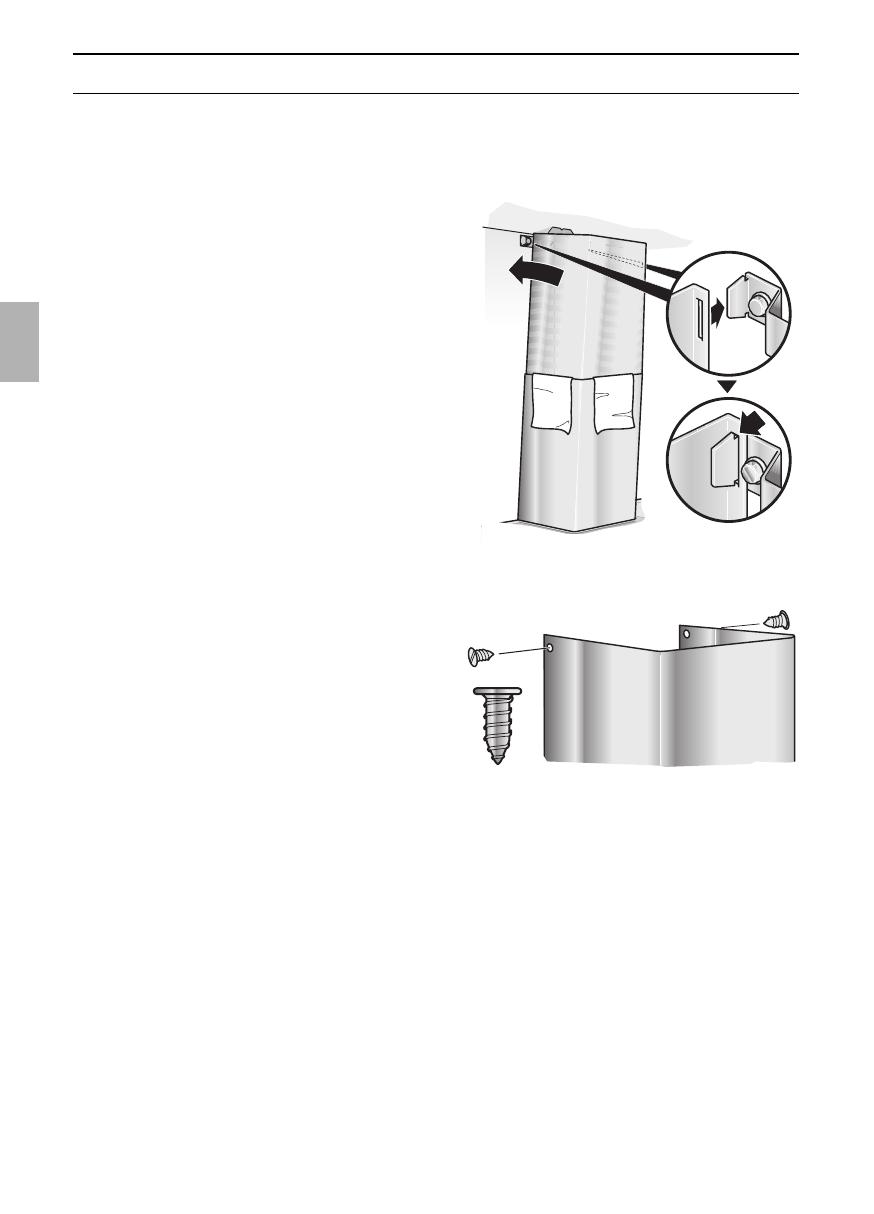Prior to installation
Preparing the wall
❑ The wall must be flat and perpendicular.
❑ Make sure that the wall can bear the
applied loads.
❑ The provided screws and wall plugs are
suitable for solid masonry. On all other
wall types (e.g. plasterboard, porous
concrete, Poroton bricks) use the
appropriate fasteners.
❑ Ensure that the wall is capable of provi-
ding a firm hold for mounting screws
and plugs.
Electrical connection
WARNING: THIS APPLIANCE MUST BE
EARTHED
IMPORTANT: Fitting a Different Plug:
The wires in the mains lead are coloured in
accordance with the following code:
Green and Yellow – Earth
Blue – Neutral
Brown – Live
Electrical connection
If you fit your own plug, the colours of
these wires may not correspond with the
identifying marks on the plug terminals.
This is what you have to do:
1.Connect the green and yellow (Earth)
wire to the terminal in the plug marked
‘E’ or with the symbol ( ), or
coloured green or green and yellow.
2.Connect the blue (Neutral) wire to the
terminal in the plug marked ‘N’ or
coloured black.
3.Connect the brown (Live) wire to the
terminal marked ‘L’, or coloured red.
The extractor hood should only be con-
nected to an earthed socket that has been
installed according to relevant regulations.
If possible, site the earthed socket directly
behind the chimney panelling.
❑
The earthed socket should be
connected via its own circuit.
❑
If the earthed socket is no longer
accessible following installation of the
extractor hood, ensure that there is a
permanently installed disconnector.
If it is necessary to wire the extractor
hood directly into the mains:
The extractor hood should only be
connected to the electricity supply by a
properly qualified electrician.
A separator must be installed in the
household circuit. A suitable separator is a
switch that has a contact gap of more than
3 mm and interrupts all poles. Such devices
include circuit breakers and contactors.
If the connecting cable for this
appliance is damaged, the cable must be
replaced by the manufacturer or his custo-
mer service or a similarly qualified person in
order to prevent serious injury to the user.
Electrical data:
Are to be found on the name plate inside
the appliance after removal of the filter
frame.
Before undertaking any repairs,
always disconnect the extractor hood from
the electricity supply.
Length of the connecting cable: 1.30 m.
This extractor hood corresponds to EC
regulations concerning RF interference
suppression.
29
Weight in kg:
Exhaust air
Recirculating
air
16,560 cm
70 cm
18,0
17,2 18,7
90 cm 18,7 20,2
We reserve the right to construction changes within the
context of technical development.














